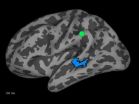(Press-News.org) The embargo has been lifted for the article, 'Neandertal Demise: An Archaeological Analysis of the Modern Human Superiority Complex.'
If you think Neanderthals were stupid and primitive, it's time to think again.
The widely held notion that Neanderthals were dimwitted and that their inferior intelligence allowed them to be driven to extinction by the much brighter ancestors of modern humans is not supported by scientific evidence, according to a researcher at the University of Colorado Boulder.
Neanderthals thrived in a large swath of Europe and Asia between about 350,000 and 40,000 years ago. They disappeared after our ancestors, a group referred to as "anatomically modern humans," crossed into Europe from Africa.
In the past, some researchers have tried to explain the demise of the Neanderthals by suggesting that the newcomers were superior to Neanderthals in key ways, including their ability to hunt, communicate, innovate and adapt to different environments.
But in an extensive review of recent Neanderthal research, CU-Boulder researcher Paola Villa and co-author Wil Roebroeks, an archaeologist at Leiden University in the Netherlands, make the case that the available evidence does not support the opinion that Neanderthals were less advanced than anatomically modern humans. Their paper was published today in the journal PLOS ONE.
"The evidence for cognitive inferiority is simply not there," said Villa, a curator at the University of Colorado Museum of Natural History. "What we are saying is that the conventional view of Neanderthals is not true."
Villa and Roebroeks scrutinized nearly a dozen common explanations for Neanderthal extinction that rely largely on the notion that the Neanderthals were inferior to anatomically modern humans. These include the hypotheses that Neanderthals did not use complex, symbolic communication; that they were less efficient hunters who had inferior weapons; and that they had a narrow diet that put them at a competitive disadvantage to anatomically modern humans, who ate a broad range of things.
The researchers found that none of the hypotheses were supported by the available research. For example, evidence from multiple archaeological sites in Europe suggests that Neanderthals hunted as a group, using the landscape to aid them.
Researchers have shown that Neanderthals likely herded hundreds of bison to their death by steering them into a sinkhole in southwestern France. At another site used by Neanderthals, this one in the Channel Islands, fossilized remains of 18 mammoths and five woolly rhinoceroses were discovered at the base of a deep ravine. These findings imply that Neanderthals could plan ahead, communicate as a group and make efficient use of their surroundings, the authors said.
Other archaeological evidence unearthed at Neanderthal sites provides reason to believe that Neanderthals did in fact have a diverse diet. Microfossils found in Neanderthal teeth and food remains left behind at cooking sites indicate that they may have eaten wild peas, acorns, pistachios, grass seeds, wild olives, pine nuts and date palms depending on what was locally available.
Additionally, researchers have found ochre, a kind of earth pigment, at sites inhabited by Neanderthals, which may have been used for body painting. Ornaments have also been collected at Neanderthal sites. Taken together, these findings suggest that Neanderthals had cultural rituals and symbolic communication.
Villa and Roebroeks say that the past misrepresentation of Neanderthals' cognitive ability may be linked to the tendency of researchers to compare Neanderthals, who lived in the Middle Paleolithic, to modern humans living during the more recent Upper Paleolithic period, when leaps in technology were being made.
"Researchers were comparing Neanderthals not to their contemporaries on other continents but to their successors," Villa said. "It would be like comparing the performance of Model T Fords, widely used in America and Europe in the early part of the last century, to the performance of a modern-day Ferrari and conclude that Henry Ford was cognitively inferior to Enzo Ferrari."
Although many still search for a simple explanation and like to attribute the Neanderthal demise to a single factor, such as cognitive or technological inferiority, archaeology shows that there is no support for such interpretations, the authors said.
But if Neanderthals were not technologically and cognitively disadvantaged, why didn't they survive?
The researchers argue that the real reason for Neanderthal extinction is likely complex, but they say some clues may be found in recent analyses of the Neanderthal genome over the last several years. These genomic studies suggest that anatomically modern humans and Neanderthals likely interbred and that the resulting male children may have had reduced fertility. Recent genomic studies also suggest that Neanderthals lived in small groups. All of these factors could have contributed to the decline of the Neanderthals, who were eventually swamped and assimilated by the increasing numbers of modern immigrants.
INFORMATION:
The study is available online when the embargo lifts at http://dx.plos.org/10.1371/journal.pone.0096424.
Neanderthals were not inferior to modern humans, says CU-Boulder study
2014-04-30
ELSE PRESS RELEASES FROM THIS DATE:
Columbia engineers grow functional human cartilage in lab
2014-04-30
New York, NY—April 30, 2014—Researchers at Columbia Engineering announced today that they have successfully grown fully functional human cartilage in vitro from human stem cells derived from bone marrow tissue. Their study, which demonstrates new ways to better mimic the enormous complexity of tissue development, regeneration, and disease, is published in the April 28 Early Online edition of Proceedings of the National Academy of Sciences (PNAS).
"We've been able—for the first time—to generate fully functional human cartilage from mesenchymal stem cells by mimicking in ...
Throwing injuries no longer just for the pros
2014-04-30
ROSEMONT, Ill.—Baseball season is back and so are the injuries. But, elbow injuries, once seen as a problem for professional athletes, are becoming more prevalent among high school and middle school athletes due to increased play and competition at the youth level. Repetitive stress to a pitcher's ulnar collateral ligament (UCL)—an important stabilizing ligament of the elbow joint—can lead to pain and eventually to the inability to pitch and throw.
According to a literature review in the May 2014 issue of the Journal of the American Academy of Orthopaedic Surgeons (JAAOS), ...
Research finds a way to protect crops from pests and disease
2014-04-30
A team of international researchers has uncovered a mechanism by which plants are able to better defend themselves against disease-causing pathogens.
The work, led by Dr Jurriaan Ton and Dr Estrella Luna at the University of Sheffield, has identified the key receptor binding a chemical called BABA (β-aminobutyric acid) which is boosting plant immunity.
BABA has long been known for its protective effects against devastating plant diseases, such as potato blight, but has so far not been used widely in crop protection because of undesirable side effects.
"We have ...
Robots may need to include parental controls
2014-04-30
Older adults' fears that companion robots will negatively affect young people may create design challenges for developers hoping to build robots for older users, according to Penn State researchers.
Companion robots provide emotional support for users and interact with them as they, for example, play a game, or watch a movie.
Older adults reported in a study that while they were not likely to become physically and emotionally dependent on robots, they worried that young people might become too dependent on them, said T. Franklin Waddell, a doctoral candidate in mass ...
Water-based 'engine' propels tumor cells through tight spaces in the body
2014-04-30
Johns Hopkins researchers have discovered a new mechanism that explains how cancer cells spread through extremely narrow three-dimensional spaces in the body by using a propulsion system based on water and charged particles.
The finding, reported in the April 24 issue of the journal Cell, uncovers a novel method the deadly cells use to migrate through a cancer patient's body. The discovery may lead to new treatments that help keep the disease in check. The work also points to the growing importance of studying how cells behave in three dimensions, not just atop flat two-dimensional ...
Frog eggs Help MU researchers find new information on grapevine disease
2014-04-30
COLUMBIA, Mo. – Vitis vinifera are common grapevines and are the world's favorite wine-producing varietal. However, research has shown that grapevines are susceptible to powdery mildew, a plant disease, which contributes to significant crop loss for most commercial wine varietals that are cultivated each year. Now, researchers at the University of Missouri have used frog eggs to determine the cause of this disease, and have found that a specific gene in the varietal Cabernet Sauvingon, contributes to its susceptibility.
"Powdery mildew disease causes the leaves of the ...
Predators predict longevity of birds
2014-04-30
This news release is available in German. Ageing inevitably occurs both in humans and in other animals. However, life-span varies widely across species. Researchers of the Max Planck Institute for Ornithology in Seewiesen have now found a possible general mechanism explaining differences in longevity. They investigated life history data of nearly 1400 bird species and found that avian life span varies considerably across the entire Earth, and that much of this variation can be explained by the species' body mass and clutch size and by the local diversity of predator ...
Your stress is my stress
2014-04-30
This news release is available in German. Stress is contagious. Observing another person in a stressful situation can be enough to make our own bodies release the stress hormone cortisol. This is the conclusion reached by scientists involved in a large-scale cooperation project between the departments of Tania Singer at the Max Planck Institute for Cognitive and Brain Sciences in Leipzig and Clemens Kirschbaum at the Technische Universität Dresden. Empathic stress arose primarily when the observer and stressed individual were partners in a couple relationship and the ...
A fattening gene
2014-04-30
This news release is available in German. The long-term consumption of too much high-energy and high-fat food leads to overweight. Behind this trivial statement lies the extremely complex regulation of lipid metabolism. Together with colleagues from Japan, scientists from the Max Planck Institute for Heart and Lung Research in Bad Nauheim have now discovered that the Sirt7 gene plays a central role in energy metabolism. Despite consuming high-fat food, genetically modified mice that lack the gene maintain their normal weight.
Food was not always available to such ...
In recognizing speech sounds, the brain does not work the way a computer does
2014-04-30
VIDEO:
Patterns of activation induced by listening to human speech move across brain hemispheres over a period of 300 milliseconds in these images, produced by combining data from EEG, MEG and...
Click here for more information.
How does the brain decide whether or not something is correct? When it comes to the processing of spoken language – particularly whether or not certain sound combinations are allowed in a language – the common theory has been that the brain applies a ...





